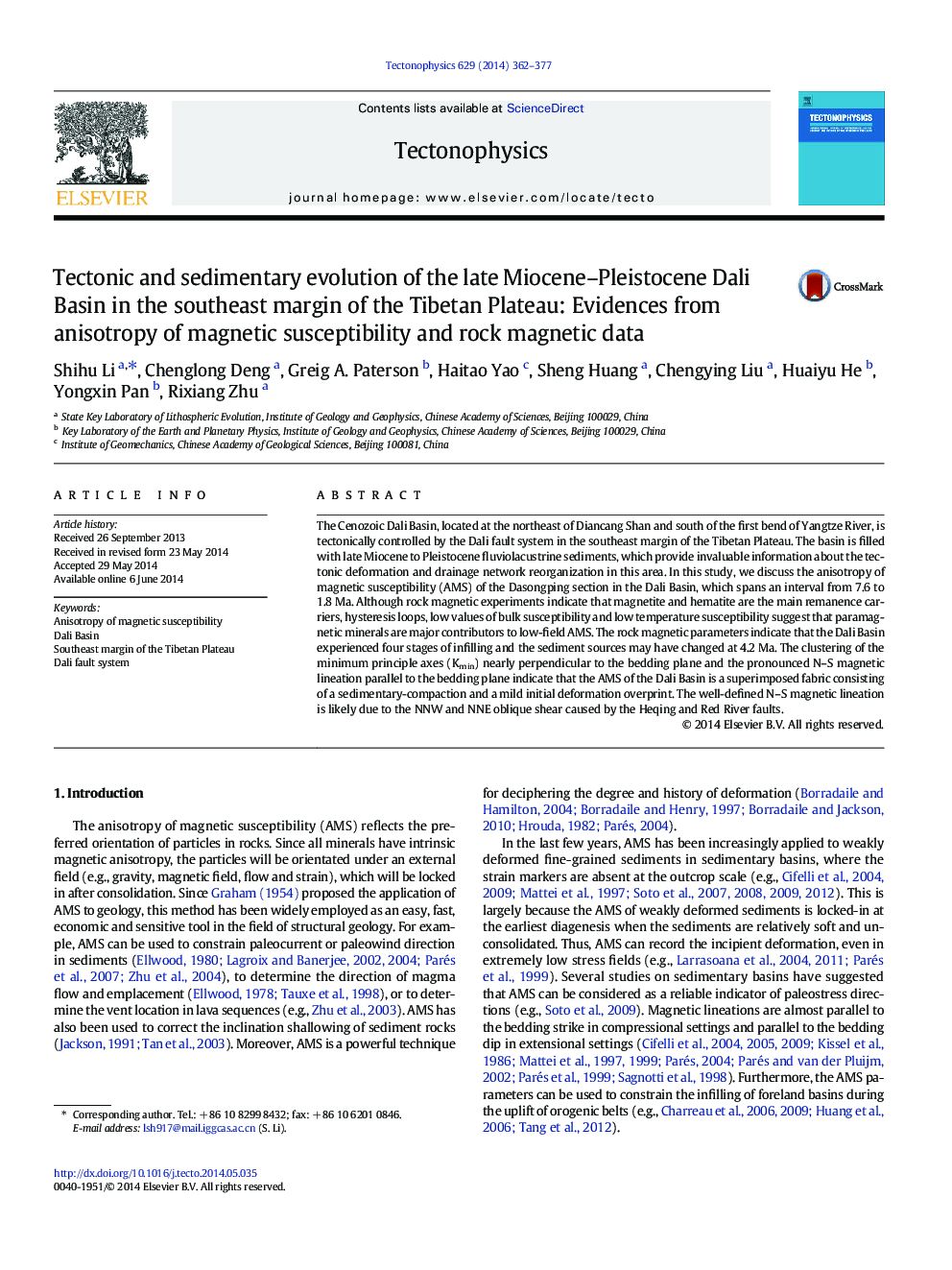| کد مقاله | کد نشریه | سال انتشار | مقاله انگلیسی | نسخه تمام متن |
|---|---|---|---|---|
| 4691922 | 1636762 | 2014 | 16 صفحه PDF | دانلود رایگان |
• We report an integrated study of rock magnetism and AMS in the Dali Basin.
• The sediment sources of the Dali Basin may have changed at 4.2 Ma.
• We identified four stages infilling of the Dali Basin.
• The AMS reflect the regional tectonic strain in the Dali area.
The Cenozoic Dali Basin, located at the northeast of Diancang Shan and south of the first bend of Yangtze River, is tectonically controlled by the Dali fault system in the southeast margin of the Tibetan Plateau. The basin is filled with late Miocene to Pleistocene fluviolacustrine sediments, which provide invaluable information about the tectonic deformation and drainage network reorganization in this area. In this study, we discuss the anisotropy of magnetic susceptibility (AMS) of the Dasongping section in the Dali Basin, which spans an interval from 7.6 to 1.8 Ma. Although rock magnetic experiments indicate that magnetite and hematite are the main remanence carriers, hysteresis loops, low values of bulk susceptibility and low temperature susceptibility suggest that paramagnetic minerals are major contributors to low-field AMS. The rock magnetic parameters indicate that the Dali Basin experienced four stages of infilling and the sediment sources may have changed at 4.2 Ma. The clustering of the minimum principle axes (Kmin) nearly perpendicular to the bedding plane and the pronounced N–S magnetic lineation parallel to the bedding plane indicate that the AMS of the Dali Basin is a superimposed fabric consisting of a sedimentary-compaction and a mild initial deformation overprint. The well-defined N–S magnetic lineation is likely due to the NNW and NNE oblique shear caused by the Heqing and Red River faults.
Journal: Tectonophysics - Volume 629, 26 August 2014, Pages 362–377
